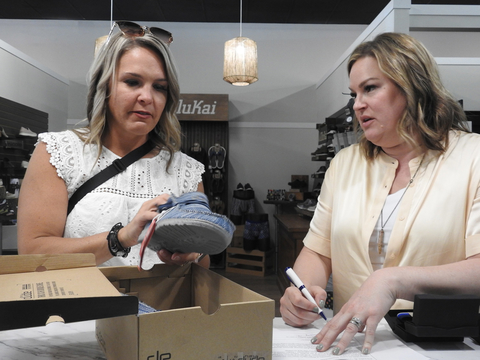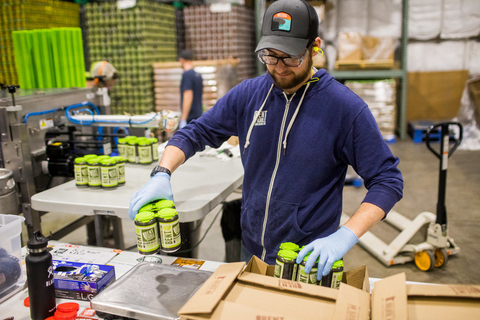Extension’s retail trade analyses help communities shape their economic future
After both the local Herberger’s and JCPenney department stores closed in 2018 in Alexandria, Nicole Fernholz was nervous. The city and surrounding Douglas County were the subjects of one of University of Minnesota Extension’s retail trade analyses. She knew the loss would hurt.
Fortunately, the news was better than expected. “Retail went down overall, but not significantly,” says Fernholz, director of the Alexandria Area Economic Development Commission.
Other report findings showed the sale of building materials went up 144 percent. This happened before recent price increases and more likely showed strength in local housing and second homes in the area, says Ryan Pesch, Extension educator in community economics.
Not all news, however, was positive. Fernholz says entertainment and recreation sales dropped 35 percent. “For a community that relies on tourism, that’s not something you want to see,” she says.
Even disappointing trends, though, can inform economic development decisions. “We’re very diverse in business and tourism, and it’s important to look at how we’re performing and what opportunities we have to grow,” Fernholz says.
Nicole Fernholz, director of the Alexandria Area Economic Development Commission, shops while checking in with Mandy Brower, owner of The Dashery. Many residents miss the bigger stores that have left town over the years, but interest remains strong in unique, locally-owned shops like Brower’s.
Ready-to-use data
The idea of Extension performing retail trade analyses began in 2002 when community economics educator Liz Templin (now retired) explored the possibility. Partnering with Iowa State, Extension’s first retail trade reports came out in 2004.
A year later, Bruce Schwartau, program leader for community economics, began creating the reports in house. “Others could get the data from the Department of Revenue,” Schwartau says, “but we created ways to make the data useful for communities.”
Extension recently compiled reports on the retail economies for each of Minnesota’s 87 counties. The reports include information on 13 retail sectors during 2018—the most recent year for which Department of Revenue data is available. Community leaders can use the data to see how each sector in their county performed.
For busy economic developers, having this type of information at their fingertips is a boon. “Every community wants to know ‘What’s driving our economy?’” says Pesch.
The story behind the numbers
Seemingly dry sales data can also tell a story. “There’s a narrative that’s going to help make sense of the numbers,” explains Pesch, “and community leaders and local business owners usually have the best ideas.”
The owner of the lumberyard, for instance, may know why sales for building materials increased. Or the owner of a local clothing boutique may be able to explain why retail sales in the area suddenly dropped. That kind of specific knowledge can help provide the color and context needed to make the data actionable for decisionmakers.
Looking to the future
As towns across Minnesota recover from the COVID-19 pandemic, retail sales look brighter. The adaptability of retailers — especially those that can pivot quickly to offer quality online shopping and safe in-person experiences — will help communities revitalize, says Pesch.
In Alexandria, retail sales are trending up after a substantial drop the past year. “We’re doing significantly better than two or three months ago,” Fernholz says.
The city plans to request another Extension retail trade analysis this fall. “These results help us determine what our opportunity gaps are as a regional center,” says Fernholz. “The information is key to where our focus will be to place new retailers, restaurants and service providers.”
The pandemic packed a punch for Minnesota’s craft breweries, but creativity and community support helped Duluth’s Bent Paddle Brewing Co. stay afloat
Minnesota’s craft breweries offer more than uniquely hoppy beers and innovative brewing styles — they also comprise a critical part of the local community’s economy. During the pandemic, they were hit hard.
Bent Paddle Brewing Co. in Duluth was no exception. “As a business that relies on the revenue of sales to bars, liquor stores, restaurants, theatres, and sports and music venues, we were significantly affected by COVID-19,” says Karen Tonnis, co-founder and vice-president of human resources and operations. Many retailers were either not open or were open with restrictions.
Brigid Tuck, Extension’s senior economic impact analyst, recently studied how the craft brewing industry fared. “In some ways, the pandemic brought out craft brewing’s strengths,” she says. “Brewers were able to shift operations to focus on more production for retail sale, but it was still difficult for an industry that depends heavily on on-site sales, as well as tourism.”
After a decade of exponential growth of Minnesota’s craft breweries, COVID-19 led to an 18 percent drop in economic activity during 2020 in an industry that generated more than $1 billion the previous year.
Bent Paddle Brewing Co. stayed afloat. “We stayed nimble and strategized unique marketing opportunities to stay connected with our customers,” Tonnis says. “We also received unbelievable support from our immediate community in our taproom.”
“The changes cut into margins and limited new investments,” says Tuck. “As Minnesotans embrace the return to public gatherings, sales should increase for brewers and, hopefully, spur additional growth.”




